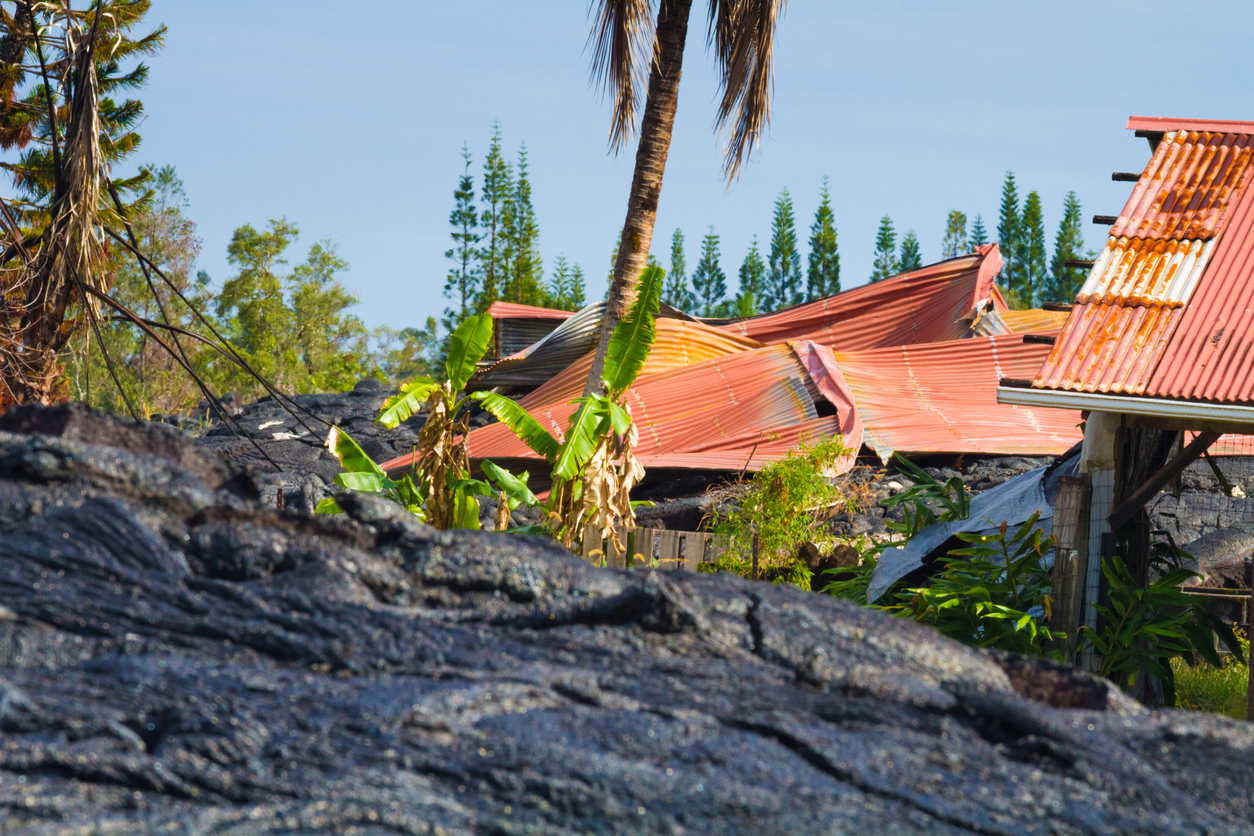There is no question – we seldom think about property losses occurring from lava flow. However, in rare instances, such losses do happen. Lava is the Earth’s way of creating new land, and if it wasn’t for lava flows we wouldn’t have the beautiful islands that make up Hawaii. Hollywood has portrayed images of volcanic eruptions where fiery molten rock flows downhill faster than automobiles can get out of the way, consuming everything in its path. In real life, there are different types of lava flows and ‘a’a is the Hawaiian name for a very, very slow lava flow. In fact, ‘a’a is lava that creeps out of a volcano or earth fissure.
Since June of this year, the big island of Hawai’i has been watching an ‘a’a flow, known as the Puna flow from the Kilauea volcano, slowly creep towards the town of Pahoa. Over the course of four months, residents of Pahoa have been watching the lava flow carefully because the slow creeping molten rock flow threatens to cut the town off through its main road and endanger homes. As is, the flow is about a mile away from Pahoa and its path has not altered. The flow is estimated to arrive into the town of Pahoa in about two (2) weeks. The ‘a’a flow is burning the vegetation in its path and the fire that ensues threatens homes and businesses all the way to the ocean.
The devastation that ensues from direct lava flow is clear: total destruction. If the flow gets close enough, it ensures property damage in its direct path due to heat, fire, ashes and gases. After all, the molten rock reaches 700-1200 degrees Celsius. The main question is whether the homeowners and business owners in the town of Pahoa will be covered under insurance from this loss.
In most cases, coverage in Hawaii from volcanic eruptions fall under earth movement “earthquake” type of policy because molten lava is essentially earth movement. However, it’s well known that lava flows are so hot that the intense heat often causes combustion and fire ahead of the flow itself. This means that a home in the path of lava can catch on fire and burn before the lava ever reaches the home. As such, there is a possibility that homes in the path of lava or in the vicinity may suffer legitimate fire claims which can afford insurance coverage under regular HO3 homeowner policies.
When running a business or purchasing a home in a high risk earthquake, volcanic region such as the Hawaiian Islands, purchasing insurance policies for separate hurricane, earthquake, and regular homeowner’s insurance should be taken seriously. Knowing what kind of policy is needed at the outset of purchasing a home or running of a business in such regions is essentially as the residents and business owners of Pahoa have found that insurance companies have place a moratorium on purchasing and raising policy limits in the Pahoa regions since September.




